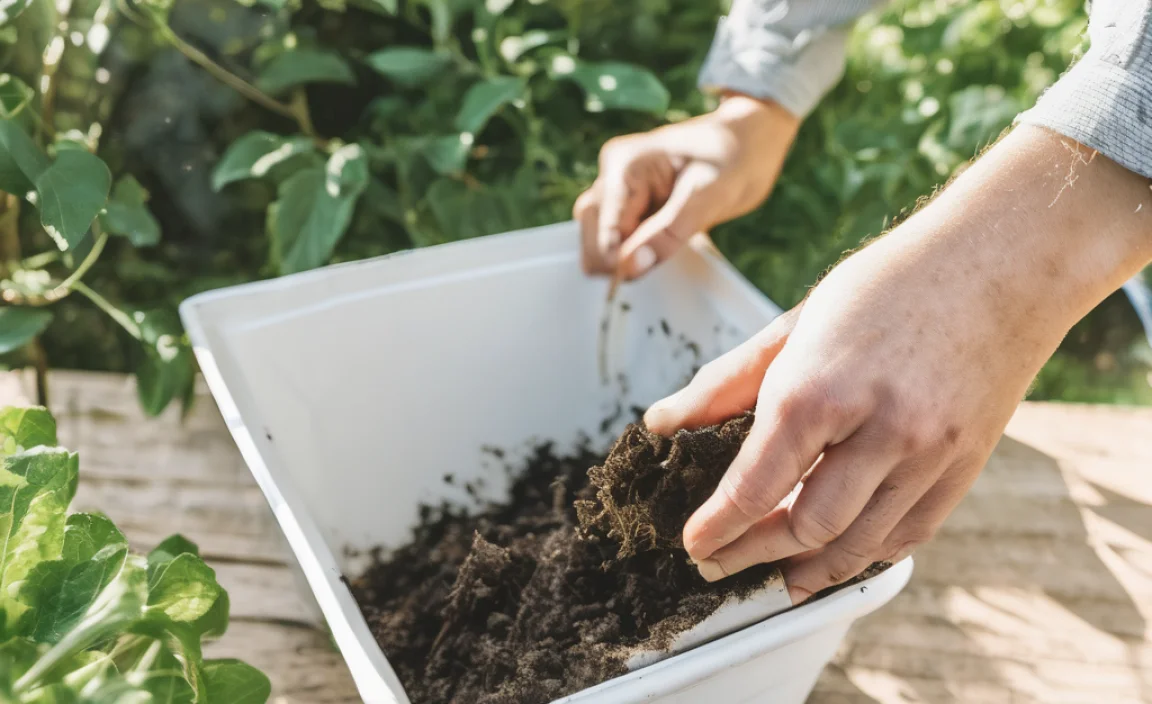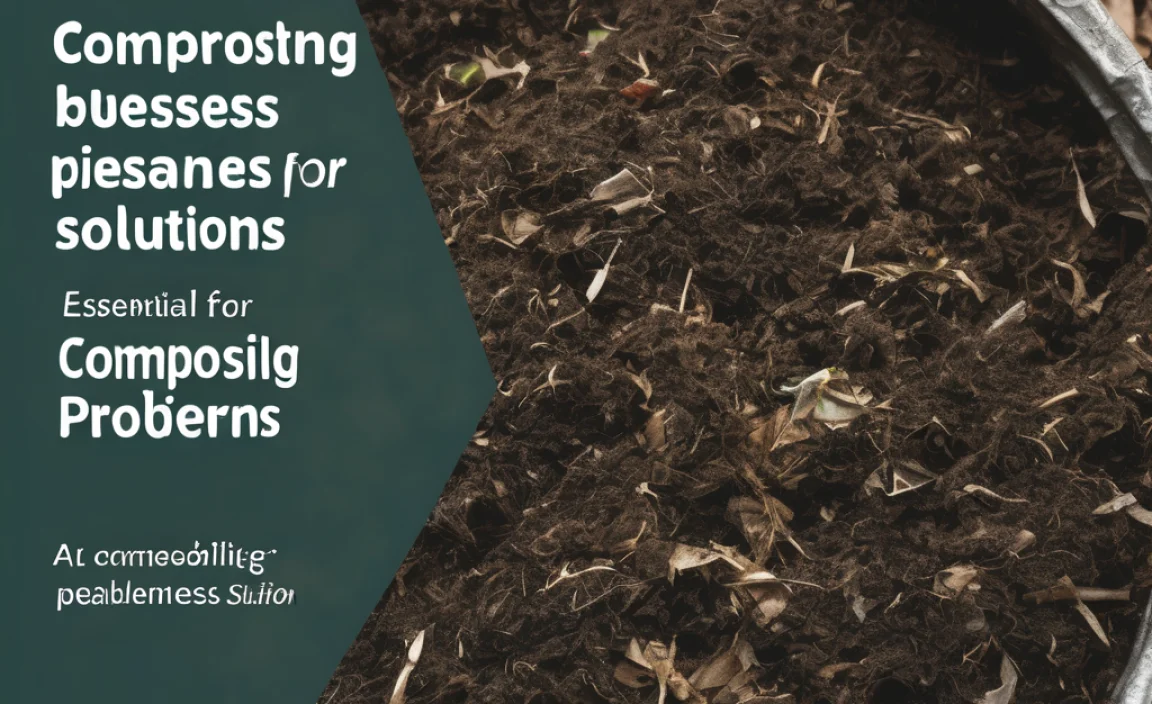Hey there, fellow home composters! So, you’ve probably heard the whispers – or maybe even seen the tell-tale signs – that rats might be eyeing your rotating compost bin. It’s a bummer, I know. You’re trying to do a good thing for your garden and the planet, and the last thing you want is an unwanted rodent party happening in your compost. Don’t worry, though! This isn’t some insurmountable gardening mystery. We’re going to walk through exactly how to keep those pesky critters away from your valuable compost. You’ve got this!
Quick Summary: Keep Rats Out of Your Rotating Compost Bin
To prevent rats from invading your rotating compost bin, focus on making your bin less attractive and more secure. This involves smart food choices, proper bin maintenance, and strategic placement. By understanding what attracts rats and implementing simple, practical solutions, you can enjoy the benefits of composting without the rodent worry. This guide provides easy-to-follow steps, helpful tips, and answers to common questions to ensure your compost stays rodent-free.
Why Rats Love Compost (and How to Stop Them)
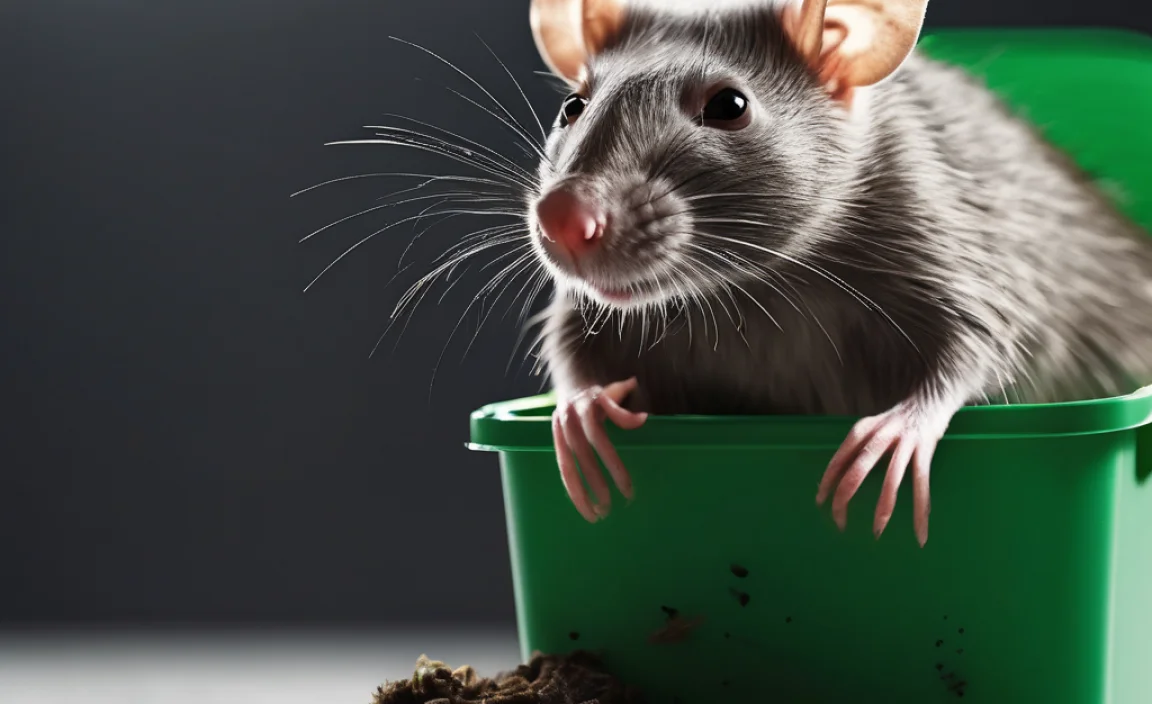
It’s no secret that rats can be attracted to compost bins. Think of it from a rat’s perspective: your compost bin is essentially a buffet! It can offer a readily available source of food, water, and shelter. These smart little guys are opportunistic, and if they find an easy meal, they’ll tell all their friends. The good news is that by understanding their motivations and making a few smart adjustments, you can turn your compost bin from a rodent restaurant into a fortress.
The primary attractants for rats in a compost bin are:
- Food Scraps: Especially meat, dairy, oily foods, and cooked grains.
- Moisture: Rotting food and damp materials create a desirable environment.
- Shelter: A dark, enclosed space provides a safe haven.
- Easy Access: Gaps or damage in the bin allow entry.
Our goal is to remove these attractions and block their access. It’s all about being proactive and a little bit clever!
Essential Prevention Strategies for Your Rotating Bin
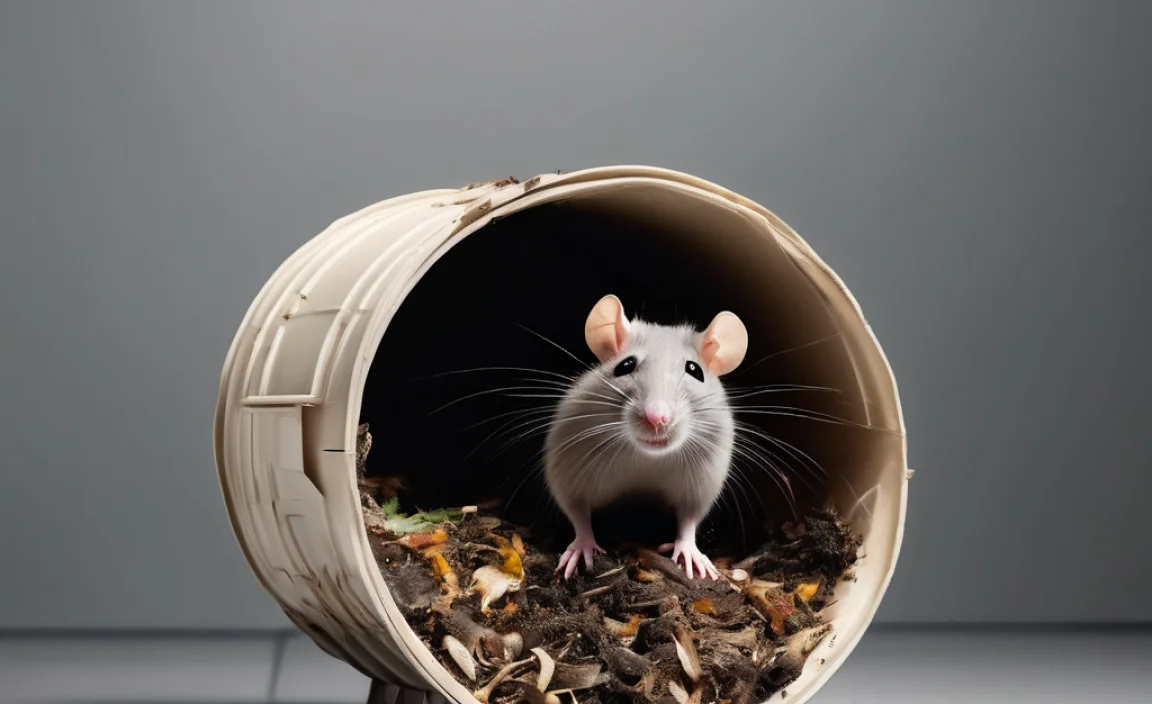
Keeping rats out of your rotating compost bin boils down to a few key strategies. We’ll break them down step-by-step, making it super easy to implement. It’s less about complicated setups and more about smart habits and a little bit of DIY flair.
1. Choose the Right Bin and Keep it Sealed
Not all rotating bins are created equal when it comes to keeping rodents out. The best bins are made of sturdy plastic or metal with tight-fitting lids and no large gaps. If you have an older bin or one with some wear and tear, inspect it regularly.
What to look for:
- Durable Materials: Thick plastic or metal is harder for rats to chew through.
- Solid Construction: Look for bins with minimal seams and openings.
- Secure Lid: The lid should fit snugly and latch or close firmly.
Actionable Tip: If your current bin has small gaps where the lid meets the body, you might be able to seal them with waterproof tape or a flexible sealant designed for outdoor use. Just make sure it’s safe for composting materials and won’t degrade in the sun.
2. Strategic Bin Placement
Where you put your rotating composter can make a big difference. Think about what rats look for: a safe, hidden place to approach and retreat. Positioning your bin correctly can deter them.
Best Practices:
- Away from Structures: Don’t place it right next to your house, shed, or a fenceline, as these can provide cover for rats.
- Open Area: Ideally, place it in a more open part of your yard where they’re more exposed and less likely to feel safe.
- Elevated Platform (Optional): Placing the bin on a raised concrete pad or sturdy platform can make it harder for rats to crawl up into it.
Consider this: Rats are less likely to scurry across open, well-lit areas. So, if possible, position your bin where it’s clearly visible and not hidden by dense bushes or piles of yard debris.
3. Manage Your Compost Ingredients Wisely
What you put in your compost bin is the most critical factor in preventing rat attraction. Some kitchen and yard scraps are like a dinner bell for rodents. The key is to avoid adding the “rat buffet” items.
What to AVOID putting in your compost bin:
- Meat, fish, and bones
- Dairy products (cheese, yogurt, milk)
- Oily or greasy foods
- Cooked grains and pasta
- Pet waste (from dogs or cats)
- Diseased plants or weeds that have gone to seed
What you CAN compost safely (in moderation):
- Fruit and vegetable scraps
- Coffee grounds and tea bags
- Eggshells
- Yard waste (leaves, grass clippings, small twigs)
- Paper and cardboard (shredded, non-glossy)
Balancing Act: The “greens” (nitrogen-rich items like fruit scraps) and “browns” (carbon-rich items like dry leaves) is important for good composting, but it’s also crucial for deterring pests. Aim for a good ratio to ensure your compost breaks down efficiently and doesn’t become a smelly, attractive mess.
4. Bury New Food Scraps
Even if you’re sticking to the right ingredients, freshly added food scraps can still attract attention. A simple but effective technique is to bury them deep within the compost pile.
How to do it:
- When you add new kitchen scraps, dig a small hole in the center of your compost.
- Place the scraps in the hole.
- Cover them completely with existing compost material or “browns” like dry leaves or shredded cardboard.
This creates a barrier, making it harder for rats to smell and access the food. It also helps the scraps start breaking down faster.
5. Maintain Proper Moisture and Aeration
A well-managed compost pile shouldn’t be overly wet and slimy, nor should it be bone dry and dusty. The right balance is key for efficient composting and less attractive to pests.
Moisture Check: Your compost should feel like a wrung-out sponge. If it’s too wet, add more “browns” (dry leaves, shredded paper, sawdust). If it’s too dry, add a little water while turning.
Aeration is Key: Rotating your bin regularly is your best friend here! This process introduces oxygen, which is vital for decomposition and helps prevent anaerobic (stinky) conditions that can attract rodents. Aim to turn or rotate your bin every few days or at least once a week.
Tip: Overcrowding can also lead to poor aeration and moisture issues. If your bin is constantly packed too full, consider starting a second bin or composting less intensively.
6. Fortify Your Bin if Needed
If you’ve tried the above and still suspect rat activity, or if you live in an area with a high rodent population, you might need to add extra layers of defense.
Hardware Cloth is Your Friend: Strong metal mesh, known as hardware cloth (typically 1/2 inch or 1/4 inch grid), is excellent for blocking access. You can use it in a few ways:
- Lining the Bottom: If your bin has ventilation holes at the bottom, you can affix hardware cloth to the inside of the bin to cover these. Rats can squeeze through surprisingly small openings!
- Reinforcing the Lid: Some lids have vents. You can cover these with hardware cloth from the inside.
- Creating a Skirt: For bins that sit directly on the ground, you can create a “skirt” of hardware cloth around the base, extending a foot or so out from the bin. Secure it well.
DIY Steps for Hardware Cloth Reinforcement:
- Measure the area you need to cover (e.g., bottom of the bin, vents).
- Cut the hardware cloth to size using heavy-duty wire cutters. Safety first: Wear thick gloves and eye protection! The edges can be sharp.
- Carefully attach the hardware cloth to the inside of the bin using zip ties, wire, or strong, rust-proof screws with washers. Ensure there are no sharp edges sticking out.
External Resource: For more on rodent-proofing structures and materials, the Centers for Disease Control and Prevention (CDC) offers valuable insights into rodent control measures, though we’re focusing on prevention for your compost bin.
7. Regular Inspections and… Vigilance
Prevention is an ongoing process. Make it a habit to visually inspect your rotating bin regularly.
What to look for:
- Chew Marks: Especially around the lid and seams.
- Droppings: Small, dark, pellet-like droppings near or inside the bin.
- Burrows: If your bin is on the ground, check for any burrowing activity around its base.
- Unusual Noises: Scratching or gnawing sounds from the bin might indicate a problem.
Prompt Action: If you see any signs of rats, don’t delay! Address the issue immediately by reinforcing the bin, adjusting your compost ingredients, or seeking professional advice if the problem persists. The quicker you act, the easier it is to resolve.
What NOT to Do: Avoid These Mistakes
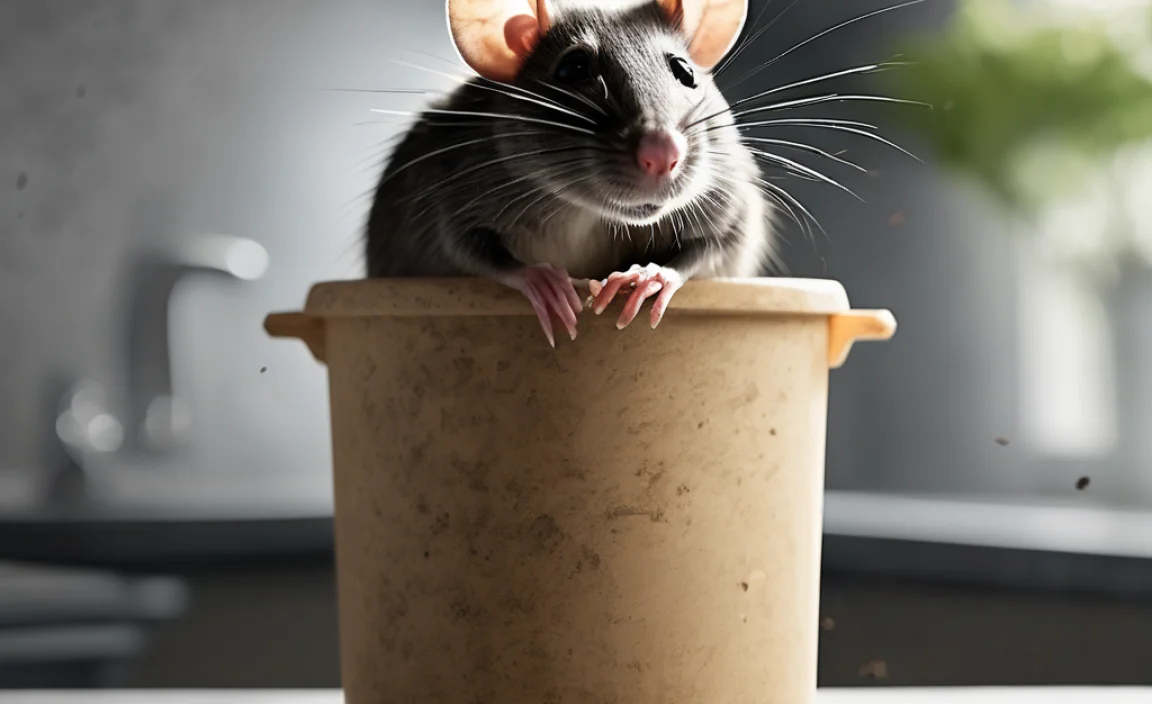
While trying to prevent rats, some methods can actually backfire or create new problems. Knowing what to skip is just as important as knowing what to do.
Common Mistakes to Avoid:
- Using Toxic Baits Near Compost: Poisons can contaminate your compost, making it unsafe for your garden, and can also harm beneficial wildlife or pets.
- Leaving Meat/Dairy in Compost: As we’ve covered, these are huge attractants. Stick to the no-go list.
- Ignoring Gaps and Holes: Rats are masters of squeezing through tight spaces. Don’t underestimate even small openings.
- Letting Compost Get Too Wet and Smelly: This creates an ideal environment for pests and shows your compost isn’t breaking down properly.
- Placing Bins in Hidden, Overgrown Areas: This provides cover and makes it easier for rodents to approach undisturbed.
Remember, the goal is a healthy, balanced compost system that also happens to be rodent-proof. Think prevention, not just reaction.
Comparing Compost Bin Features for Rodent Resistance
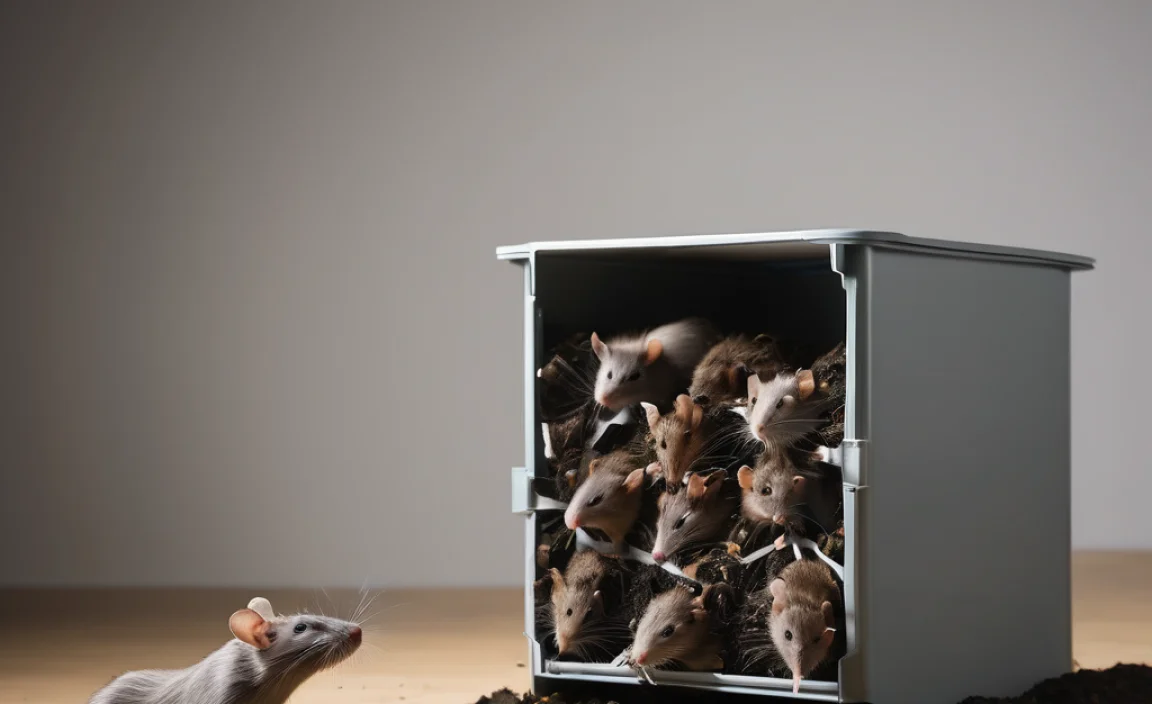
When selecting or modifying a rotating compost bin, certain features significantly impact its ability to deter rodents. Here’s a quick comparison to help you make informed choices.
| Feature | Rodent Resistance Level | Notes for Prevention |
|---|---|---|
| Material: Heavy-Duty Plastic | High | Thick, solid plastic is difficult for rats to chew through. Choose bins without thin walls. |
| Material: Metal | Very High | Durable and hard to chew. Ensure seams are tightly sealed and no sharp edges are exposed that could injure wildlife you see as beneficial. |
| Lid Seal | High | A snug-fitting lid that latches securely is crucial. Gaps allow easy entry. |
| Ventilation Holes | Medium | Essential for aeration, but if too large, they can be entry points. Smaller vents or those covered with mesh are best. |
| Seams and Joints | Medium | Well-constructed bins have minimal seams or tightly sealed ones. Gaps here are entry points. |
| Age and Wear | Low to Medium | Older bins may develop cracks or looseness, compromising their integrity. Regular inspection and repair are needed. |
| Base Design (no holes) | High | Bins that sit directly on the ground can be an entry point if the base is not solid or well-sealed. Elevating or adding mesh to the base helps. |
DIY Tip: If your bin has any of the “Medium” or “Low” resistance features, consider reinforcing them with hardware cloth as described in Strategy #6.
Understanding Rat Behavior Near Compost
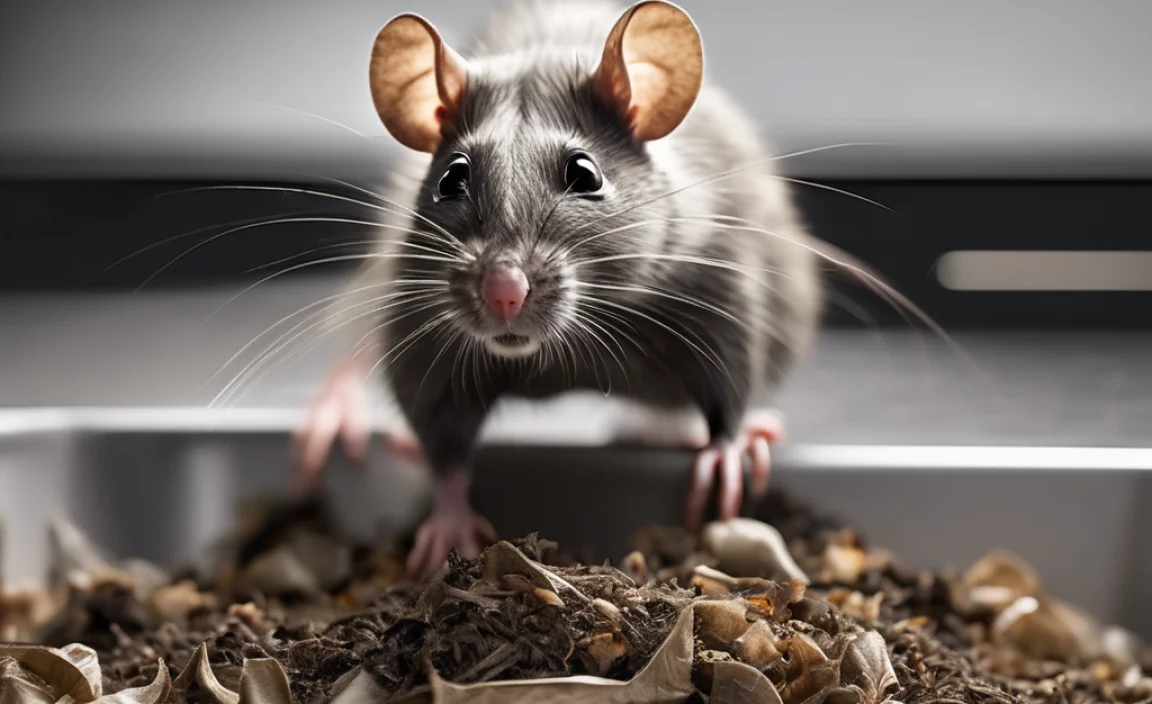
To effectively prevent rats, it helps to think like one. Rats are cautious creatures, often sticking to edges and avoiding open spaces where they feel exposed. They are also driven by their senses of smell and taste, seeking out easy sources of nutrients and water.
Key Behaviors to Consider:
- Nocturnal Activity: Rats are most active at night, so daytime inspections might not reveal everything.
- Gnawing: They constantly gnaw to keep their teeth trimmed. This means they can chew through softer materials like wood or thin plastic if motivated.
- Opportunism: If a food source is made easily accessible and safe, they will exploit it.
- Shelter Seeking: They look for quiet, dark places to nest and hide, which is why compost bins can seem appealing.
- Trails: Rats often follow the same paths. If you see consistent activity near your bin, it’s a good sign they’ve found a route.
By understanding these behaviors, you can better position your bin, seal it effectively, and manage its contents to make it an unattractive and inaccessible food source and shelter.
When to Seek Professional Help
While most rat issues around compost bins can be resolved with the DIY methods we’ve discussed, there are times when the problem might be more persistent or severe.
Consider professional help if:
- You’ve implemented all the prevention strategies and still see ongoing activity.
- You notice signs of a large infestation (e.g., numerous droppings, frequent sightings, gnaw marks on your home).
- You’re uncomfortable dealing with rodent control yourself, especially if you have children or pets.
- The rats are causing damage to your property beyond the compost bin.
A pest control professional can assess the situation, identify entry points, and recommend targeted solutions. They can also advise on safe and humane methods if necessary. For more information on dealing with pests in a home environment, resources from your local Environmental Protection Agency (EPA) or university extension offices are excellent sources of reliable, science-based advice.
FAQ About Rotating Bin Composting and Rats
Q1: Can rats really chew through a plastic compost bin?
A: Yes, rats can and will chew through thinner plastics if they detect food inside and can’t access it otherwise. Thicker, more durable plastics are much harder for them to penetrate. If your bin is flimsy, consider reinforcing it with hardware cloth.
Related Posts

I am passionate about home engineering. I specialize in designing, installing, and maintaining heating, ventilation, and air conditioning systems. My goal is to help people stay comfortable in their homes all year long.


